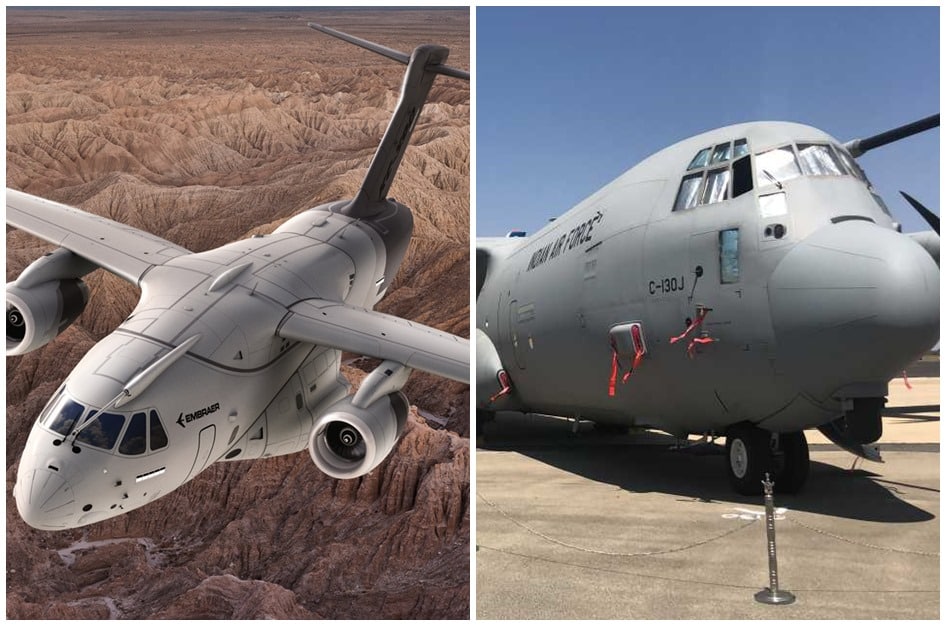Aerospace
Lockheed Martin’s C-130J Ready-to-Build Aircraft in India Amidst C-390 Competition

In the competition for medium-range military transport aircraft for the Indian Air Force, there are currently three main contenders. Airbus offers the A400, Embraer presents the C390, and Lockheed Martin proposes the C130J, which is already in service with the Indian Air Force.
These contenders are actively promoting their aircraft to India, as the Indian Air Force plans to acquire between 40 to 80 aircraft, subject to various operational requirements.
Embraer has partnered with Mahindra to assemble its aircraft in India, aligning with the Make in India initiative. This initiative aims to manufacture products locally and enhance domestic production capabilities.
Lockheed Martin, leveraging its joint venture with Tata (TLMAL), aims to capitalize on the significant opportunity to sell military transport planes to India. TLMAL currently manufactures tail assemblies for C-130s in the US.
As per the sources Airbus is pitching its A400M aircraft to the Indian Air Force. The company has a joint venture with Tata to produce C295 transports in India. Meanwhile, Embraer, which manufactures the C-390, has already sold eight planes to India for executive and early warning aircraft use and has partnered with Mahindra to compete for this order.
Lockheed Martin advocates for India to continue procuring C-130Js, highlighting their availability of spare parts, reliability, and low operating costs. Additionally, the commonality in training, maintenance, spares, and logistics support is emphasized as advantageous features of the aircraft.

Aerospace
When Ratan Tata was denied entry to the airfield at the Aero India show, he waited

During our visit to Aero India 2019, we had the unexpected opportunity to see Ratan Tata at the event, which was a thrilling moment for us. However, there was a surprising hiccup when the security staff didn’t allow him to enter due to a lack of a security pass.
Despite this, he remained calm and patiently waited for about 20 minutes until a member of the Tata team brought him the required pass, after which he calmly proceeded inside. It was a humbling sight, showcasing his composed demeanor even in such situations.
Ratan Tata ji is not only a renowned industrialist but also a trained pilot, holding a pilot’s license. In 2007, he became the first Indian civilian to fly the F-16 Falcon during the Aero India show in Bangalore—a proud moment for the nation.
His passion for aviation extended beyond flying, as he played a key role in shaping India’s aerospace industry. Under his leadership, Tata ventured into manufacturing and maintaining aerospace components while upholding its legacy of quality. Notably, Tata’s collaboration with Airbus to develop and manufacture the C295 aircraft is a testament to its growing influence in the sector.
-

 Aviation2 months ago
Aviation2 months agoMicrosoft Flight Simulator Raises $3 Million to Bring Back the An-225 Mriya
-

 Airlines2 months ago
Airlines2 months agoQatar Citizens Can Travel to the United States Without a Visa
-

 Aviation2 months ago
Aviation2 months agoQatar Airways bans these new Electronic Devices on plane
-

 Airlines2 months ago
Airlines2 months agoJapan Airlines Rolls Out Free Domestic Flights to International Passengers
-

 Defence2 months ago
Defence2 months agoWhich Country Has the Largest Fleet of Fighter Aircraft?
-

 Airport2 months ago
Airport2 months agoWestern Sydney Airport Welcomes Its First Plane After 6 Years of construction
-

 Travel2 months ago
Travel2 months agoQatar Airways Launches Four Additional Flights from Amsterdam
-

 Aviation2 months ago
Aviation2 months agoDid you know ? Once Boeing 747 carried 1088 passenger in 1991








